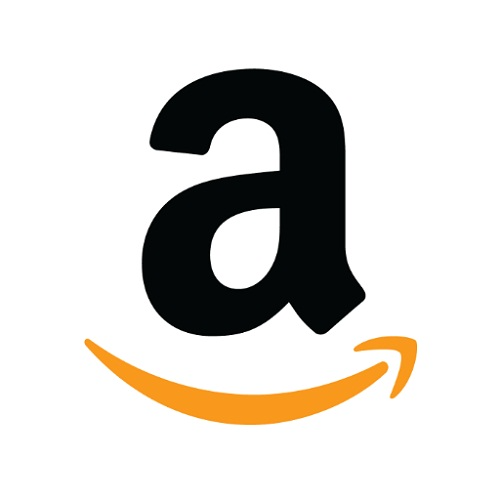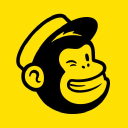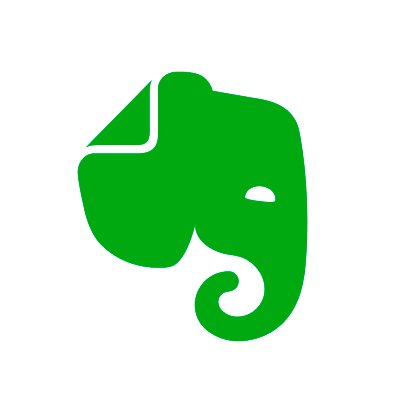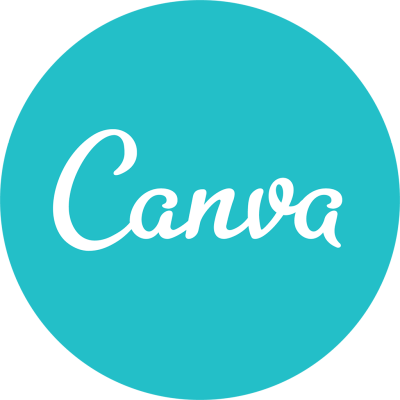Lessons Learned From Launching An Education Media Startup
Note: This business is no longer running. It was started in 2016 and ended in 2022. Reason for closure: Shut down.
Hello! Who are you and what business did you start?
Hey there, my name is Andrew Bliss, the founder of The Adventurous Mailbox. We sell adventure-based educational packages to schools, homeschoolers, and gift-buyers for kids aged 8-12.
Our Explorer Package (both digital and printed versions) contains eight adventure books (captivating, character-rich, and totally awesome) that introduce kids to cultures of the world.
Kids also get neva<>codes, a manual of fun computer coding missions based on the adventure books. Teachers will have complete access to hundreds of traditional lessons in our Teacher’s Lounge, and kids will get lifetime membership to Crameye’s World, our online portal where kids can chat with each other and our characters, play games, win prizes, and keep exploring.
After an initial strong start, the business halted due to overexpansion. We are preparing a relaunch in spring 2019 with new products, new focus, and a narrowed target market. We are making just a few thousand a month now, but forecast 20K/mo in revenue by the end of 2019.


What's your backstory and how did you come up with the idea?
The inspiration for the company came eight years ago after a trip I took to Thailand. My niece and nephew back in the USA were growing so quickly, and I wanted to be part of their growing up experience. Then aged 5 and 4 respectively, I wrote them a letter about my trip to Thailand, turning it into an adventure book with photos from my trip, including temples, jungles, monks, tigers and tiger poop. The kids loved it, and I think it was my brother who said something like, “You should make this into a real book or something…”
No one is an expert in every aspect of running a business, and you are losing an opportunity by not bringing in others. Once more people became part of my operation, a lot more great ideas came about and the business benefited greatly.
The idea for the book germinated for a while, and when I got around to writing it, I realized I wasn’t really good at writing books for very young children. After showing a version to a friend with kids back home, she pointed out that 6-year-olds wouldn’t understand about 80% of what I was trying to say. So, I could either learn how to write to them, or change my focus to older kids who have a few more connections zipping around their brains and aren’t just sticking things up their noses for kicks.
As the book idea developed, I needed to have a voice that spoke directly to the kids. I thought about writing it in 3rd person, but I wanted a direct dialogue with the reader and opted for 1st person. I didn’t want to use my own voice, because it is an old and dorky voice, so I needed a hero. The result was 12-year-ol Crameye Junker. That name, actually, was stolen directly from my mother. Crameye was her childhood imaginary friend, and I couldn’t think of a better name for our hero.
Over time, the book turned into a business idea—a business where we could have a dialogue with lots of kids about how awesome the rest of the world was. Having grown up in the Midwest (Cincinnati), I thought how amazing it would have been, as a 10-year-old, to not only get foreign packages in the mail, but also to be exposed to different ways of thinking and even being from around the world. And now as an adult, after living abroad for over a decade, I realize that being able to respect and understand other cultures is one of the most important skills someone can have in the 21st Century world. And now that I have a couple foreign languages under my belt, I have also realized how deeply you can explore other cultures once you speak their language.
These skills are lacking in American kids these days, most likely due to geography. The USA is not like Europe, where an entirely new culture is a quick train ride away. Despite this obstacle, American kids still need to get along with people from other cultures if they are to succeed later in life. Gone are the days when the three R’s ruled, and gone are the days when Americans could sit back and let everyone come understand our culture and our thinking.
The Adventurous Mailbox, then, became a way for me to open up young minds to the idea that people can have different ways of thinking and being around the world that are just as legit as their own. I also wanted to inspire them to want to travel abroad, learn another language or two, and in general look upon the world as a big source of adventure.

Take us through the process of designing, prototyping, and manufacturing your first product.
Once I had decided to make this idea into a business, I needed a better product than just a book. I decided to launch with an initial series (with more planned) of eight books, lessons for homeschoolers and classroom teachers, and the online platform for kids.
The first thing I had to do was research and write the books. I wanted them to be entertaining enough that kids would love them, but informative enough so teachers would too. It was important to get their stamp of approval as my product would then have an additional and huge market to sell to (gift givers + educators).
To focus on writing some amazing books, I quit my job teaching at a university in Taipei and moved to a smaller city where I couldn’t get distracted so easily. Then, with a combination of research, interviews and travel, I wrote the first series. Each of our books is a foreign adventure written through the personal narrative of 12-year-old Crameye Junker. Epitomizing 21st Century Learning objectives, each book is written as a letter to the reader, introducing a featured country’s culture, language, mythology, and more, as well as an engrossing adventure. The individual stories follow an overarching storyline throughout the series, with eight 40-60-page books per series.
The books are based on the lives of Crameye Junker and the members of his mysterious family. As the first series starts, Crameye and his family are settling into Taiwan, where his father has just moved them to reestablish what he calls their “home base”. From there, they are constantly flying out on the company jet to other countries, accompanying his father as he handles matters of great importance.
After writing the books, I needed to assemble an international team to get the rest done. I met the first illustrator for the books here in Taiwan, but was based in Germany. He also designed the first series for us.
When creating the lessons in our Teacher’s Lounge, I was lucky to have several teaching friends in the USA to help with feedback, classroom testing, coding to meet certain standards, and direction. I didn’t want to create fluff, but something that teachers could really rely on.
For the online portal for kids, I found an amazing French web designer (who remains at the core of this company) based in Taipei. All of the material there (character blogs, cultural activities) I also had to research and write.
Finally, I needed to design the packaging for the books. This needed to be very special as I planned to push the idea of our packages arriving as a mysterious package from abroad.
In total, from writing the first books to receiving the finished packages, it took me about 2 years and $50,000 (which was about all the money I had to my name).


Describe the process of launching the business.
There are a lot of benefits to launching a business in Taiwan, but also many headaches.
The biggest struggle I faced over here is raising capital. Even though I personally have permanent residency here, and though my business is 100% Taiwanese, I couldn’t qualify for loans or small business grants from the government because I am not a citizen. And since our market is English-speaking countries and our product is a very Western concept, it has been difficult to find investors who understand the potential.
It is hard as an entrepreneur to give up control of what you create, but eventually what you create has to take on a life of its own, and you have to be smart enough to let it outgrow you.
So, I have needed to fund the company out of savings, the generosity of friends and family, and through one good investor from the States. That was enough to just barely get the business launched. At first, I felt strange reaching out to friends and family to invest, but when it came to either sacrificing my pride or my dream, it was an easy choice.
Since we are based in Taiwan and sell to English-speaking countries, a great website was paramount. Unfortunately, I really dropped the ball on this one. I demanded from my very patient designer that the website not look too commercial, and that he include the copious amounts of text I was using to describe our products. I didn’t want tacky “Buy Now!” buttons or “Wait! Don’t go!” pop-ups to spoil the look of the website. I wanted to appear artistic and interesting, not purely capitalistic. It was the dumbest thing I could have done.
I had wrapped up too much of my self-identification in the company and was for some reason afraid of success. The way the website was designed, it was difficult to make a purchase and required several minutes just to figure out what was going on.
Unsurprisingly, sales weren’t great. But for many great reviews, we wouldn’t have sold anything probably. I have learned my lesson, though, and while still toning down direct appeals to buy, am not afraid of embracing capitalism. Our new website will be easy to use, understand, and make purchases on.
My biggest mistakes at the beginning were all just starting too early. For example, I started a Kickstarter before I had one Facebook fan for my business. I learned afterward that Kickstarter campaigns are best run when you already have people interested in your idea. You should also not be afraid to share the idea with family and friends. I spent a lot of time crafting a beautiful campaign with very interesting gifts for donations at different levels, and just sort of put it out there with a whole lot of hope. I didn’t even tell my friends and family about it for fear it wouldn’t raise the target amount. Needless to say, we didn’t each our target as there really aren’t thousands of people just searching through Kickstarter looking for a project to help. If I could do it again, I would have run it after building up a Facebook and Instagram following, and then unabashedly reaching out to them and to my personal network once launched.
The last couple of years, I have been to school, so to speak, and am thrilled to be relaunching.
Since launch, what has worked to attract and retain customers?
One thing I did right, especially with my limited budget, was reach out to bloggers in our field. For a sample product, many are very willing to use your product and offer an honest review. It’s important, though, to find quality bloggers. I really pored through different blogs, eschewing those that were just shilling for free product. These you can spot easily, as their blogs are filled with nothing but reviews for major products, and they are all glowing. Better, find a blog that also writes about related issues and events.
You also need to be leery of inflated social media numbers. If a blogger claims to have 10,000 fans on Facebook, but their posts there only generate a handful of likes and zero comments, those 10,000 fans were most likely paid for. Better, find bloggers with active social media. Two thousand followers, but 50 likes and 50 comments for each post is much better.
To reach out to these quality bloggers, I contacted them directly (if contact info given) or through social media, and honestly conveyed that I had a new product that I was very proud of, and that I would love their expert opinion. I also shared our mission and inspiration, which also helped us get more bloggers interested in our products than pushing something that was simply cute and new.
After choosing those with great reputations, the reviews I collected were wonderful and allowed me to fill up our testimonials page. They provided great quotes for Facebook ads, and also provided great advertising on the blogs themselves.
My great mistake was not having a focused market. I was way too naïve and ambitious, thinking everyone would just come find me, and the overall business suffered. I am able to sell our products to North America, the UK, Australia and South Africa, and I focused on all at the same time.
I am also able to sell our products as a cool gift and as an educational resource. With the latter, I can sell to homeschoolers, public schools, and private. All different markets with different channels, and I tried to do it all at the same time. It would have been much better to focus on one, do it well, and slowly expand from there. That is what is happening with relaunch.
Regarding Amazon, I have decided to hold off for a while. I think must Amazon users don’t explore too deeply in their search results (I know I don’t) and the first few pages of results are usually companies that can afford to spend heaps.
How are you doing today and what does the future look like?
I am really optimistic about our relaunch. I have decided to focus on our educational benefit and sell primarily to schools and homeschoolers. I have made our concept easier to understand and am selling as complete packages as opposed to many disparate parts consumers can put together.
It is good to have a vision of the life you want to be living, and then start a business that will get you there. For me, I knew I wanted to live abroad, travel, and rely on my creativity. I also wanted to be involved in education and have a positive impact.
We also have a new product coming out that is right on trend: neva<>codes, which is a “top-secret” instruction manual teaching kids about computer coding. With the images and site we provide, kids will be able to design their own digital postcards and games based on our books. We are putting the finishing touches on this now, and it looks awesome.
We also plan to recruit a salesforce to help us sell directly to schools and attend conventions on our behalf.
Through starting the business, have you learned anything particularly helpful or advantageous?
In addition to my many mistakes already detailed, another was that I was a complete control freak. Yes, this company was my baby, and I really had a great idea with it, but the company suffered because I tried to do everything myself.
No one is an expert in every aspect of running a business, and you are losing an opportunity by not bringing in others. Once more people became part of my operation, a lot more great ideas came about and the business benefited greatly.
It is hard as an entrepreneur to give up control of what you create, but eventually what you create has to take on a life of its own, and you have to be smart enough to let it outgrow you.
What platform/tools do you use for your business?
Since our site is Wordpress, we use Woocommerce for sales. It is customizable and really easy to use with Wordpress.
It was difficult as a company based in Taiwan to find a payment processor, and even though my local bank gave us a dedicated merchant account, their security was lagging and Western customers would not have felt safe.
So we settled Paypal and Bluesnap, the latter of which is one of the only processors to help foreign companies that aren’t primarily gambling or porn.
I also love using Canva and PicMonkey for social media posts, and love Tailwind for organizing pins on Pinterest.
I am also really happy with MailChimp so far for mailing lists and automated emails after purchase of our digital products.
What have been the most influential books, podcasts, or other resources?
I have learned a lot recently from this site, and also learned a lot from Side Hustle.
The past couple of years, some of the books that have helped both my business and myself are The Power of Habit (helped me get stuff done and become an actual businessman); The Lean Startup (helped me breathe new life into my endeavor and keep it afloat); and Sapiens (not a biz book at all, but one that helped me come understand my role as a human and the capitalist world I had decided to enter).
Advice for other entrepreneurs who want to get started or are just starting out?
Aside from wanting to make money, it helped me also think about the type of person I wanted to become – what contribution I wanted to make and what kind of life I wanted to be living.
It is good to have a vision of the life you want to be living, and then start a business that will get you there. For me, I knew I wanted to live abroad, travel, and rely on my creativity. I also wanted to be involved in education and have a positive impact.
The Adventurous Mailbox allows me to do all of this. I have worked my ass off, but it has all been things I love doing.
Are you looking to hire for certain positions right now?
Yes! Once we grow a bit, we will need to hire content creators and social media managers. We are also looking for sales reps in the USA and Canada. Soon, I also hope to hire my boss – someone to run the business and marketing while I manage content.
Where can we go to learn more?
- theadventurousmailbox.com
- Facebook: https://www.facebook.com/TheAdventurousMailbox/
- Twitter: @MailAdventure
- IG: @theadventurousmailbox
- Pinterest: The Adventurous Mailbox
- Email: [email protected]
If you have any questions or comments, drop a comment below!

- 4,818 founder case studies
- Access to our founder directory
- Live events, courses and recordings
- 8,628 business ideas
- $1M in software savings

- 4,818 founder case studies
- Access to our founder directory
- Live events, courses and recordings
- 8,628 business ideas
- $1M in software savings

- 4,818 founder case studies
- Access to our founder directory
- Live events, courses and recordings
- 8,628 business ideas
- $1M in software savings

- 4,818 founder case studies
- Access to our founder directory
- Live events, courses and recordings
- 8,628 business ideas
- $1M in software savings

- 4,818 founder case studies
- Access to our founder directory
- Live events, courses and recordings
- 8,628 business ideas
- $1M in software savings

- 4,818 founder case studies
- Access to our founder directory
- Live events, courses and recordings
- 8,628 business ideas
- $1M in software savings

- 4,818 founder case studies
- Access to our founder directory
- Live events, courses and recordings
- 8,628 business ideas
- $1M in software savings

- 4,818 founder case studies
- Access to our founder directory
- Live events, courses and recordings
- 8,628 business ideas
- $1M in software savings

























